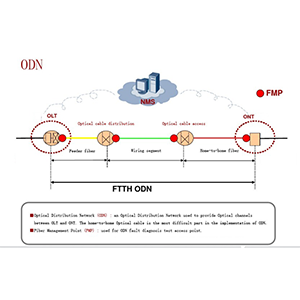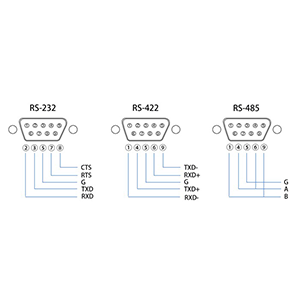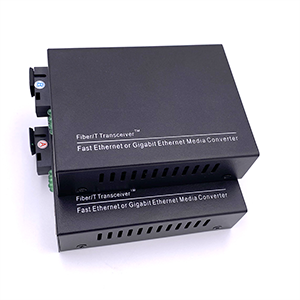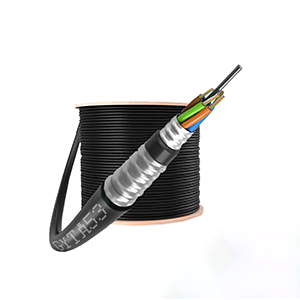Fiber optic connectors undoubtedly play an important role in fiber optic networks. This article will explore the characteristics of two types of fiber optic connectors, APC and UPC. We will first define the working principle and structural composition of fiber optic connectors and briefly introduce the common types of fiber optic connectors. Next, we will explain the end face angle design of APC connectors and its advantages, and analyze its performance in suppressing reflections.
We will explain the end face processing technology and characteristics of UPC connectors and explain its performance in terms of optical power loss. In addition, we will compare the differences between the two connectors in terms of reflectivity, loss and other indicators, and analyze the application advantages of APC and UPC connectors. Finally, we will explore the compatibility of APC and UPC connectors in interconnection applications and provide suggestions for correct matching.
Basic concepts of fiber optic connectors
Let me introduce you to the basic concepts of fiber optic connectors in detail.
The working principle and structural composition of optical fiber connectors:
(1) Working principle:
- The optical fiber connector is used to reliably connect the optical fiber end face with the optical transmitting/receiving device.
- It realizes the smooth coupling of optical signals from one optical fiber to another through precise alignment and contact.
(2) Structural composition:
- Connector housing: provides the shape and holding structure of the connector.
- Alignment device: accurately aligns the optical fiber end face to ensure coupling efficiency.
- Spring mechanism: realizes reliable locking of the connector and the optical device interface.
- Optical fiber connector: the protected and exposed part of the optical fiber end face.
- Coupling medium: between the two connector end faces, improves the optical coupling efficiency.
Common fiber optic connector types:
(1) FC (Ferrule Connector)
- The earliest fiber optic connector, using a cylindrical metal shell.
- It has good mechanical strength and centering accuracy.
(2) SC (Subscriber Connector)
- Square shell design, simpler and more compact structure.
- Widely used in various optical network equipment.
(3) ST (Straight Tip)
- Using a cylindrical shell with a rotating spring mechanism.
- Quick plug-in and unplug connection without the use of tools.
(4) LC (Lucent Connector)
- Miniature design, suitable for high-density fiber cabling applications.
- Simple LC and duplex LC connectors coexist.
(5) MPO (Multi-fiber Push On)
- Integrated connector that supports multiple fibers.
- Widely used in data centers and telecommunication networks.
These are the most widely used fiber optic connector types, each with its own characteristics and applicable scenarios.
Technical features of APC connectors
Let me introduce you to the technical features of APC (Angled Physical Contact) connectors in detail.
APC connector end face angle design and its advantages:
(1) End face angle design:
- The fiber end face of the APC connector is cut at an angle of 8°~15°.
- This is different from the standard straight PC (Physical Contact) connector end face which is vertical.
(2) Advantages:
- The angle design can effectively suppress the reflection of the optical signal at the fiber end face.
- The reflected light will cause the loss of optical power and the quality of the optical signal, seriously affecting the transmission performance.
- The APC connector uses the end face angle design to deviate the reflected light from the fiber axis, thereby greatly reducing the reflectivity.
(3) Performance indicators:
- The reflection loss of APC connectors is usually lower than -60dB, which is much better than the -30dB of PC connectors.
- This extremely low reflectivity makes APC connectors more suitable for applications in analog optical transmission, CATV and FTTH.
The performance of APC connectors in suppressing reflections:
(1) Reflection suppression capability
- APC connectors can reduce the reflectivity to below -60dB, which is much better than the -30dB of PC connectors.
- This is due to the design of the beveled end face of the APC connector, which effectively deflects the reflected light.
(2) Connection loss
- The typical connection loss of APC connector is 0.2dB, which is comparable to that of PC connector.
- Even when the two connectors are used in series, the connection loss can be kept within 0.5dB.
(3) Fiber alignment accuracy
- The fiber end face alignment accuracy of APC connector is basically comparable to that of PC connector, and both can reach an excellent level.
- This is due to the precise alignment mechanism design used in both connectors.
(4) Long-term reliability
- The APC connector can maintain high reliability in long-term use due to its excellent reflection suppression performance.
- The reflected light power is low, which is not easy to cause damage and aging of the fiber end face.
In short, APC connectors have significant advantages in suppressing reflections, connection losses and long-term reliability, making them the first choice for many optical transmission applications.
Technical features of UPC connectors
Let me introduce you to the main technical features of UPC (Ultra Physical Contact) fiber optic connectors in detail.
End face processing technology and its characteristics of UPC connectors:
(1) End face processing technology:
- The fiber end face of the UPC connector adopts a special grinding and polishing process.
- By precisely controlling the processing parameters, a smooth end face that is approximately spherical is finally formed.
(2) Process characteristics:
- The UPC end face processing technology requires extremely high precision and flatness.
- Advanced automated processing equipment is used to ensure the consistency of end face shape and quality.
- The surface roughness of the end face can reach below 10nm, reaching the optical mirror level.
(3) Advantages:
- The spherical end face structure is conducive to close contact and coupling between optical fibers.
- The smooth surface helps to reduce reflection loss and improve optical coupling efficiency.
- Precise processing technology ensures high consistency of connector performance.
Performance of UPC connector in terms of optical power loss:
(1) Connection loss:
- The typical connection loss of UPC connector can be as low as less than 0.1dB.
- This is due to its spherical end face structure and precise fiber alignment.
(2) Reflection loss:
- The reflection loss of UPC connectors is usually less than -45dB.
- This is a significant improvement over the standard straight PC connector (-30dB).
(3) Total power loss:
- The total power loss of UPC connectors (including connection and reflection loss) can be as low as 0.3dB.
- Compared with PC connectors, UPC connectors can significantly reduce the overall loss of optical transmission.
(4) Long-term stability:
- The optical power loss of UPC connectors remains stable during long-term use.
- This is due to its smooth end face structure with excellent anti-aging performance.
In summary, the UPC connector has outstanding performance in optical power loss, reflection suppression and long-term reliability due to its unique end face processing technology, and is an ideal choice for high-performance optical fiber transmission.
Comparison between APC connector and UPC connector
Let me compare the technical characteristics of the two optical fiber connectors, APC (Angled Physical Contact) and UPC (Ultra Physical Contact).
Differences between APC and UPC connectors in key indicators:
(1) Reflectivity:
- The reflection loss of APC connectors is usually less than -60dB, which is significantly better than the -45dB of UPC connectors.
- The angled end face design of APC connectors is more conducive to suppressing reflected light.
(2) Insertion loss:
- The insertion loss of the UPC connector can be as low as 0.1dB, which is better than the 0.2dB of the APC connector.
- The spherical smooth end face of the UPC is conducive to better contact and coupling between optical fibers.
(3) Total power loss:
- Due to the difference in reflection loss, the total power loss of the APC connector is slightly lower than that of the UPC connector.
- However, the total power loss of both connectors is controlled within 0.3dB, and the performance is very good.
(4) Long-term reliability:
- The end face processing technology of both APC and UPC connectors can ensure reliable long-term performance.
- However, the bevel design of the APC connector is more conducive to suppressing the increase in reflection caused by end face aging.
Advantages of APC and UPC connectors in different application scenarios:
(1) Application advantages of APC connector:
- Excellent reflection suppression performance, suitable for reflection-sensitive applications such as analog optical transmission, CATV, FTTH, etc.
- Can better ensure long-term optical fiber transmission performance and reliability.
(2) Application advantages of UPC connector:
- Excellent low insertion loss performance, suitable for digital optical transmission applications with higher requirements for optical power loss.
- Spherical end face structure is more conducive to close coupling and efficient optical coupling between optical fibers.
(3) Common applications of the two connectors:
- In most general optical fiber transmission applications, APC and UPC connectors can provide excellent performance.
- Depending on the focus of specific application requirements, you can choose APC or UPC connectors.
In short, APC and UPC, two high-performance fiber optic connectors, each has its own technical characteristics and applicable scenarios. Engineers need to make reasonable choices based on actual needs.
Interoperability of APC and UPC connectors
Let me explain in detail the compatibility and correct matching methods of APC and UPC connectors in interconnection applications.
Compatibility of APC and UPC connectors in interconnection applications:
(1) Connection characteristics:
- The end face of the APC connector is cut at an angle of 8-15°, while the end face of the UPC connector is a spherical structure.
- This leads to a certain mismatch between the two connectors when they are directly connected.
(2) Connection loss:
- When APC and UPC connectors are directly connected, additional connection loss will be generated due to the different end face structures.
- This connection loss is usually around 0.5-1dB, which is significantly higher than the APC-APC or UPC-UPC connection.
(3) Reflection performance:
- The reflection loss of APC connector is better than that of UPC, but it will degenerate to the UPC level when APC-UPC is connected.
- That is, the excellent reflection suppression performance of APC connector is difficult to play in APC-UPC connection.
Correct matching of APC and UPC connectors:
(1) Same type connection
- Preferably use APC-APC or UPC-UPC connection.
- This can maximize the performance advantages of each.
(2) Conversion adapter
- If APC-UPC connection is required, a conversion adapter can be used.
- The conversion adapter can achieve APC and UPC connectors.
- Thereby avoiding the performance degradation problem when directly connecting.
(3) Endface inspection
- When making any type of connection, make sure that the fiber endface is clean and intact.
- Good endface quality is also a prerequisite for ensuring connection performance.
In short, when choosing APC or UPC connectors, you should weigh the needs of the actual application scenario. If APC-UPC connection is necessary, it is recommended to use a conversion adapter to obtain the best performance.
Summary
The reasonable selection of APC and UPC connectors suitable for optical fiber networks is crucial to improving transmission performance. Our company has long been focusing on the research and development and production of optical communication equipment and its supporting products, and has rich industry experience. Our APC and UPC series connector products have reached the industry-leading level in terms of optical performance and reliability, and can meet your demanding needs for high-speed network construction.
Whether you need to deploy in a data center, a telecommunications office, or an FTTH access network environment, we can provide you with customized fiber optic connector solutions. At the same time, our professional team will provide you with a full range of technical support, including on-site surveys, solution design, and installation and commissioning guidance. Contact us now to learn more about APC and UPC fiber optic connectors.
APC and UPC Fiber Optic Connector FAQ
APC (Angled Physical Contact) and UPC (Ultra-Physical Contact) are two different types of fiber optic connector endface polishing styles.
The main difference is the angle of the polished endface. APC connectors have an 8-degree angled endface, while UPC connectors have a flat (0-degree) polished endface.
APC connectors provide better return loss performance, which is important for reducing signal reflections in fiber optic systems. UPC connectors are less expensive and simpler to manufacture.
APC connectors are commonly used in high-performance, long-haul fiber optic networks, while UPC connectors are more common in shorter-reach, lower-performance applications.
APC connectors have a green body color, while UPC connectors are typically blue in color. The angled endface of an APC connector is also visually apparent.
APC and UPC connectors are not directly compatible and should not be interconnected, as this can cause significant signal degradation and potential damage to the fiber optic interfaces.
APC connectors are commonly used with single-mode fiber optic cables, while UPC connectors can be used with both single-mode and multimode fiber cables.
Proper cleaning techniques, such as the use of lint-free wipes and alcohol-based cleaners, are essential to maintain the performance and cleanliness of both APC and UPC connectors.
Mixing APC and UPC connectors can result in high insertion loss, back reflections, and potentially even damage to the fiber optic interfaces.
Ongoing advancements include the introduction of higher-density connector formats, such as MPO/MTP, as well as the integration of APC and UPC connectors with additional features, like integrated shutters.





